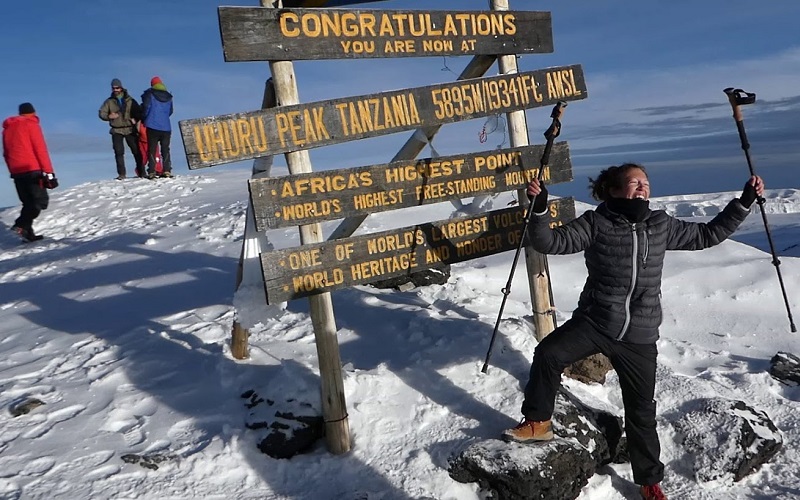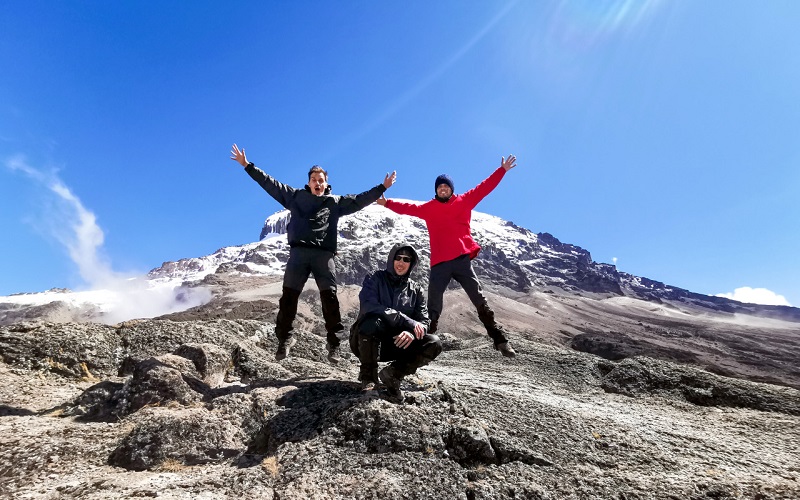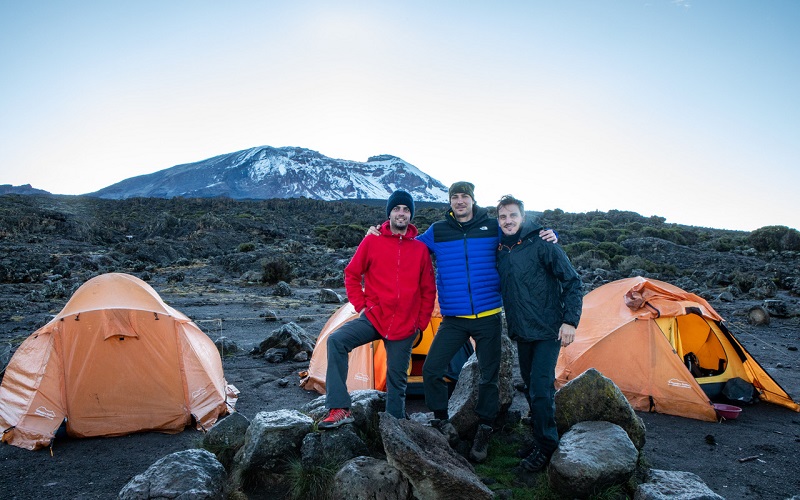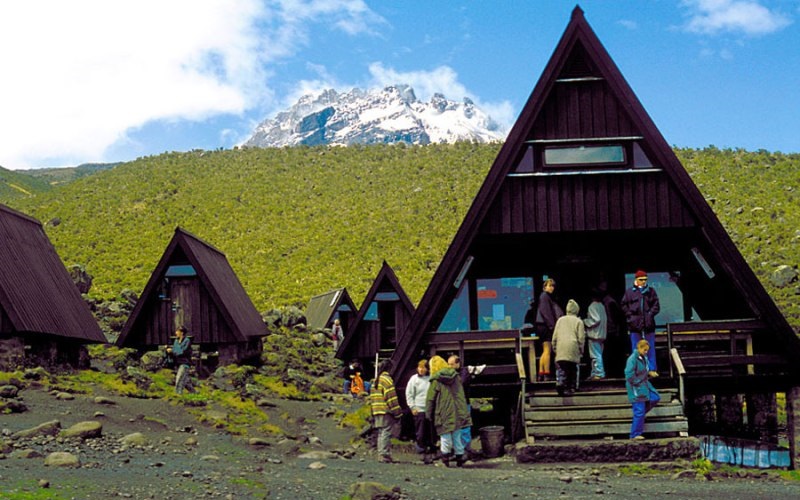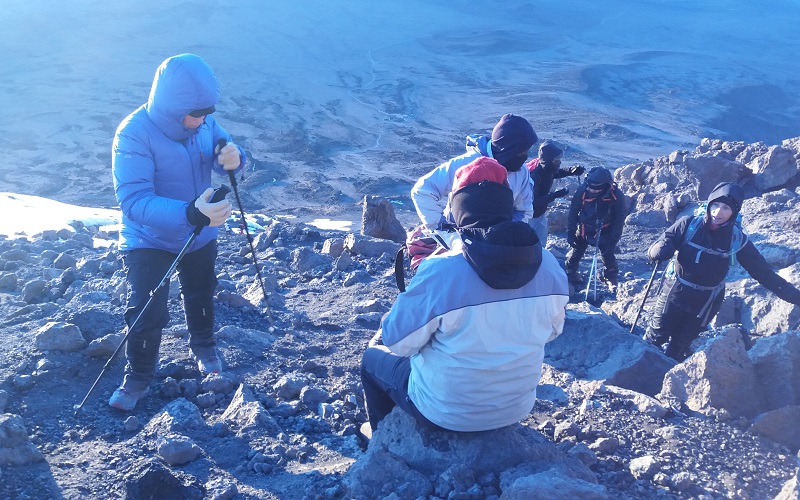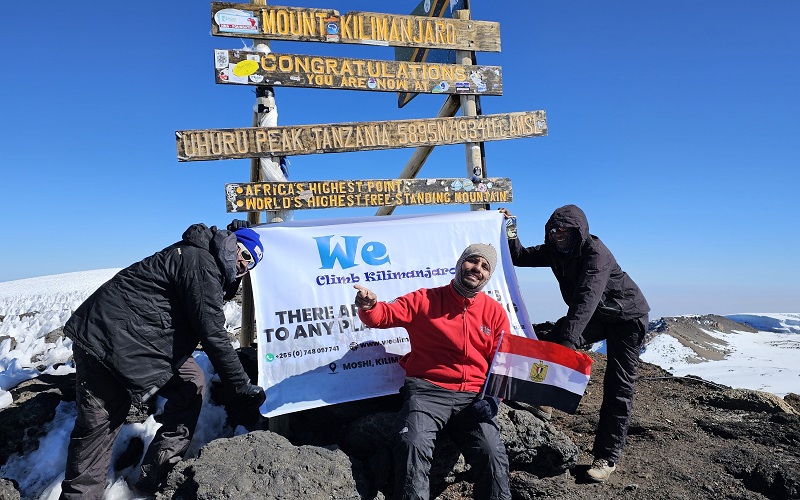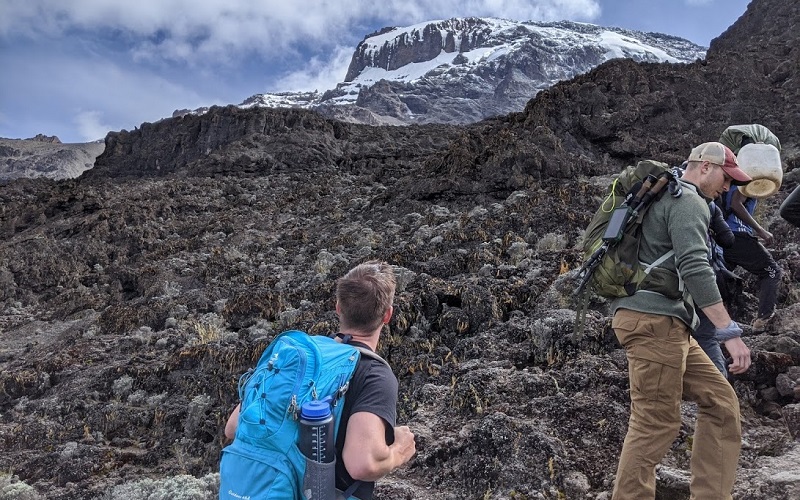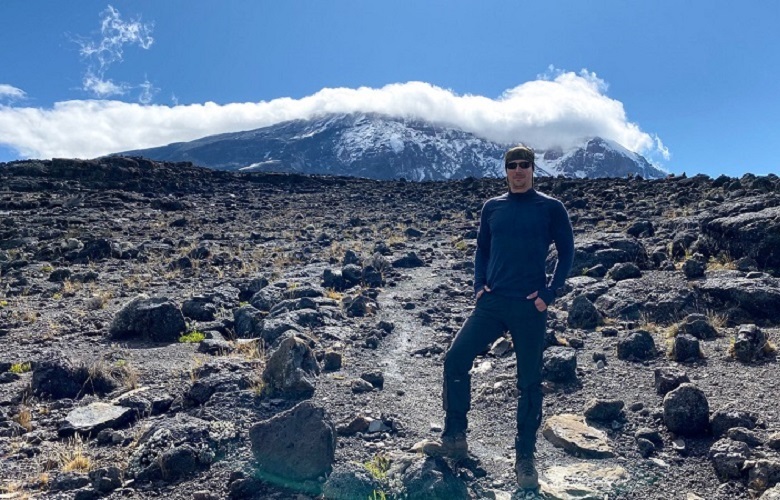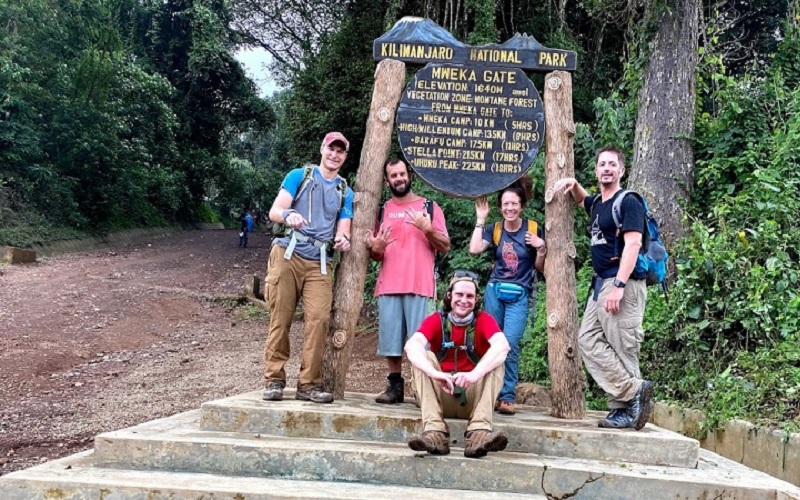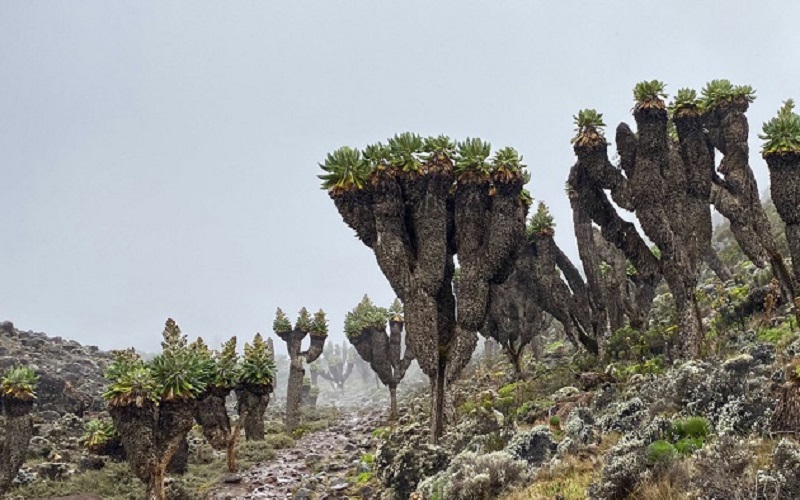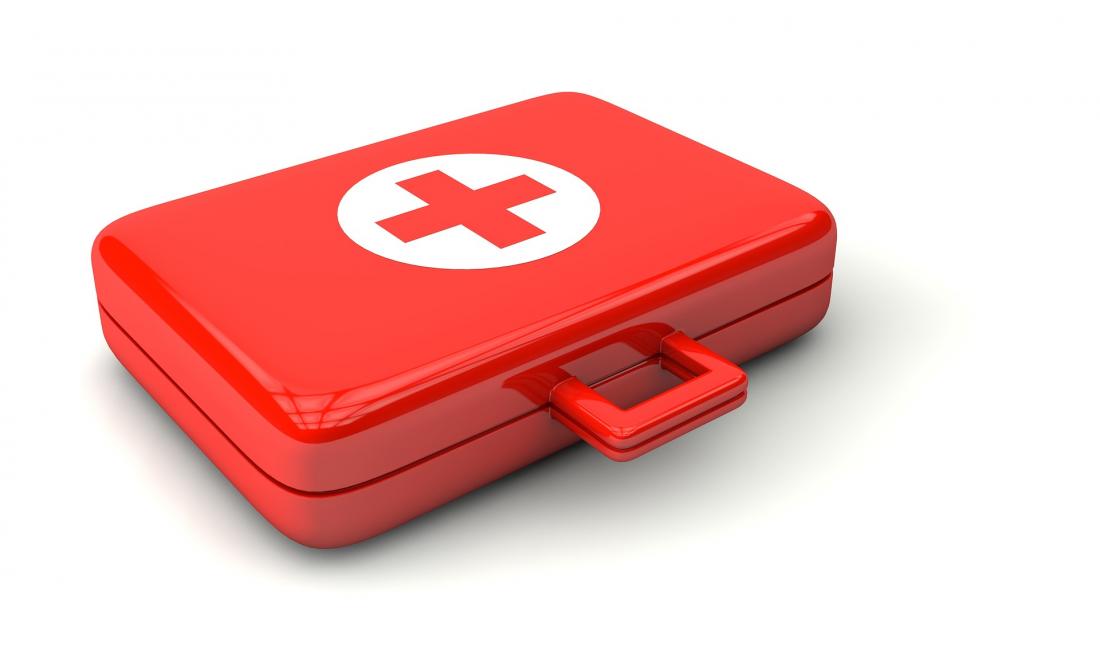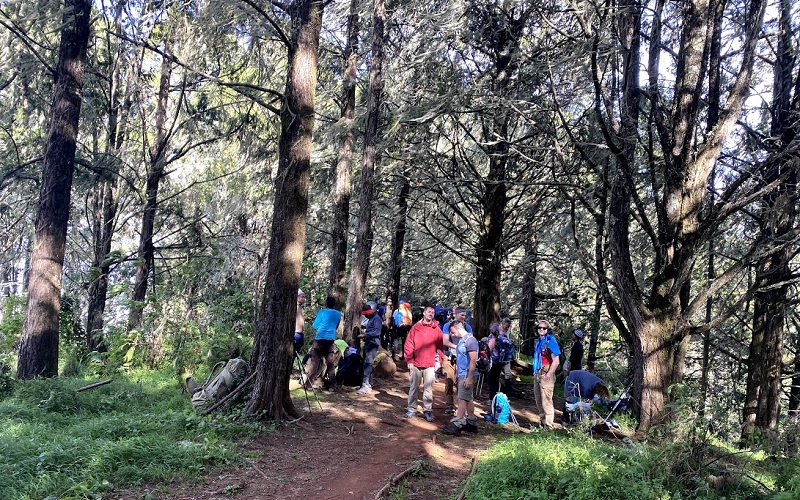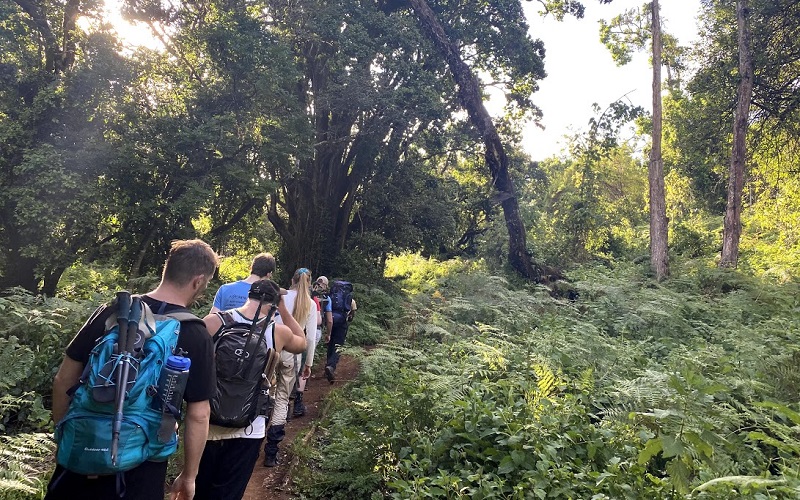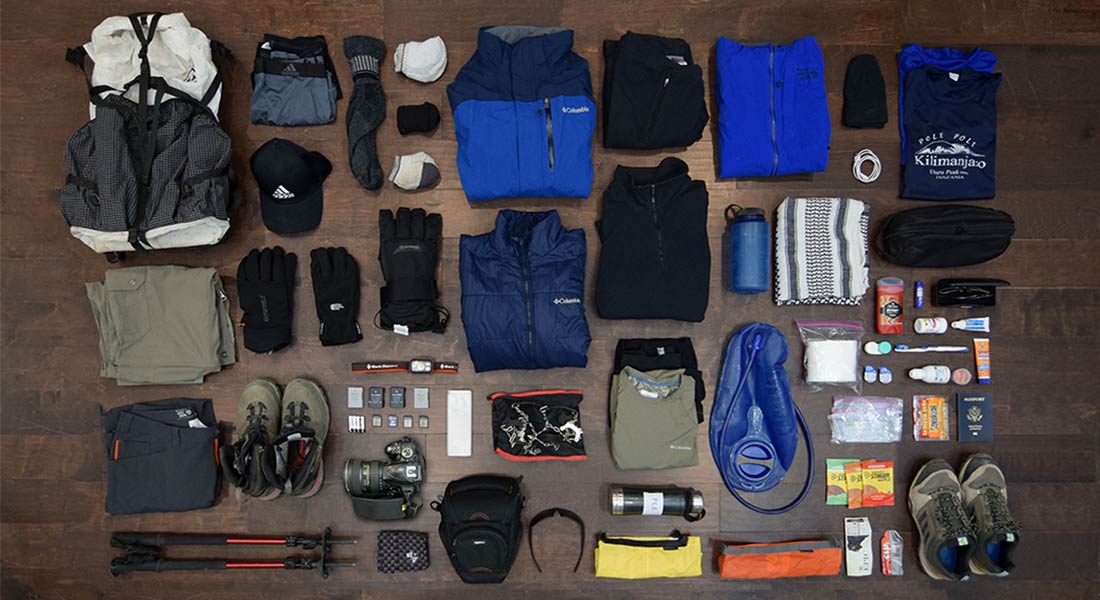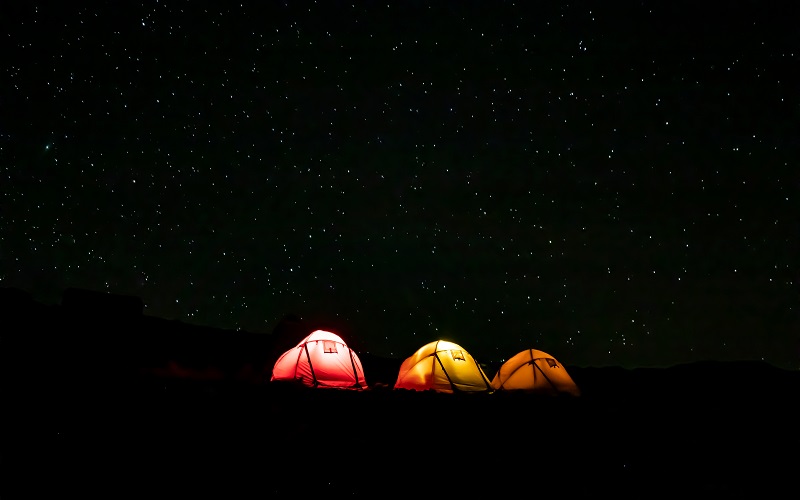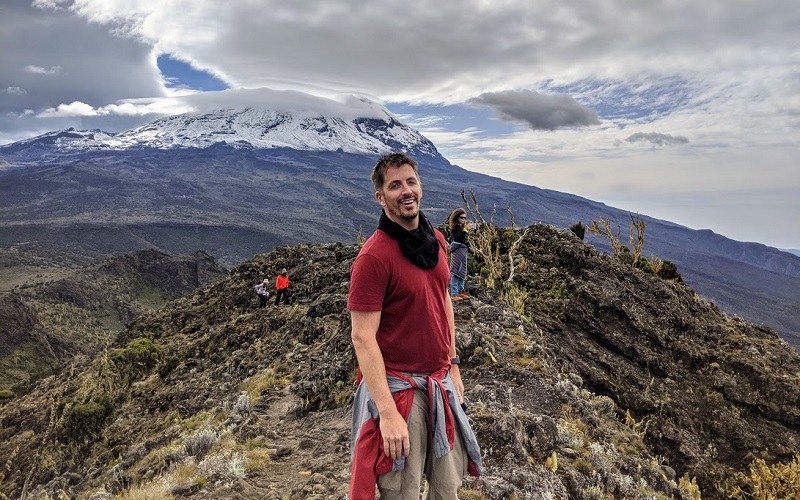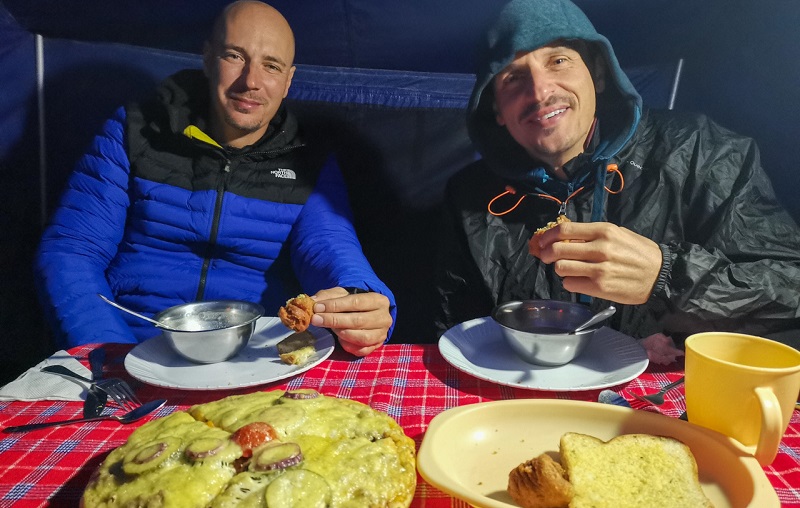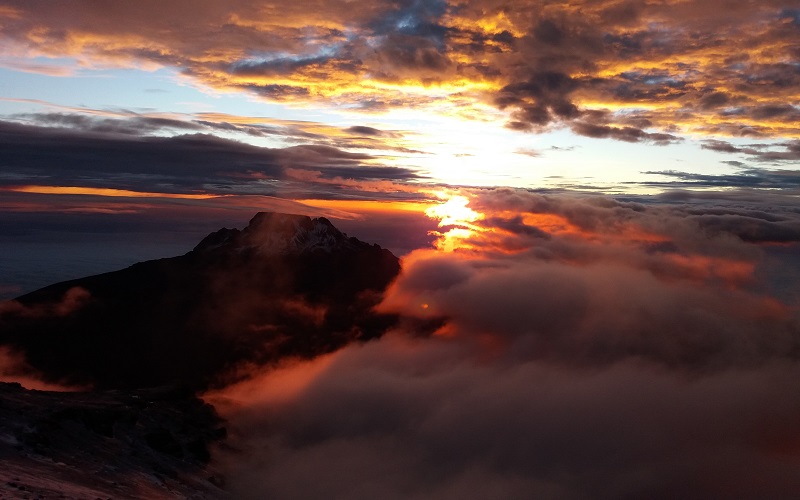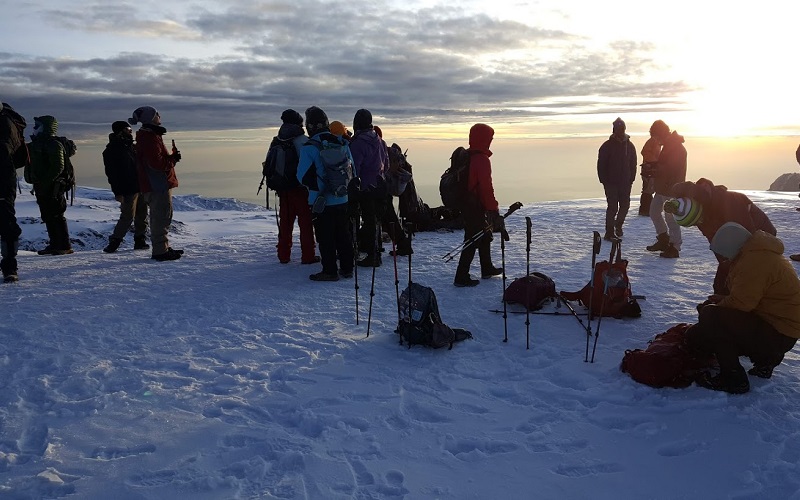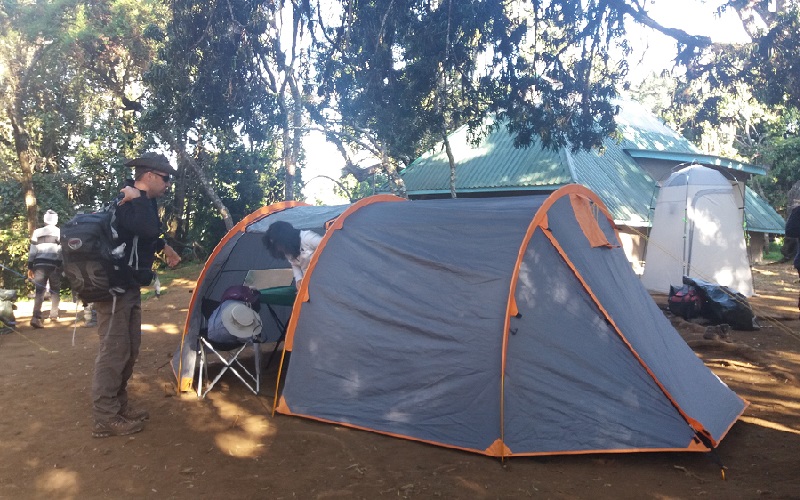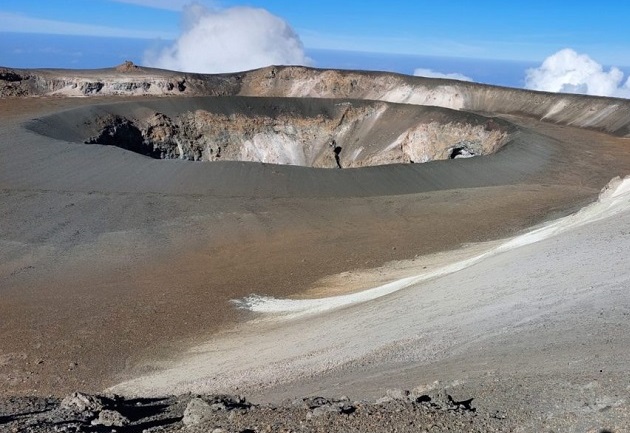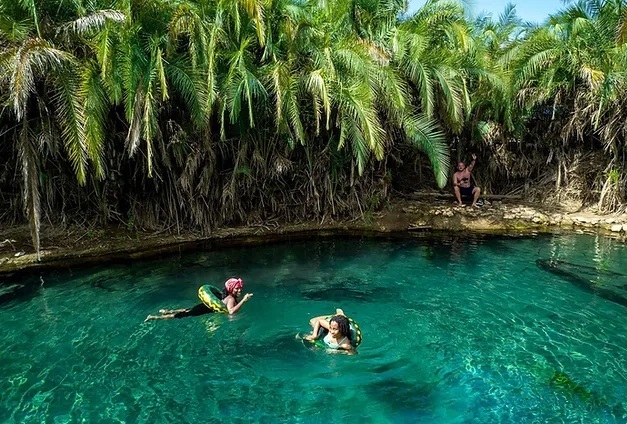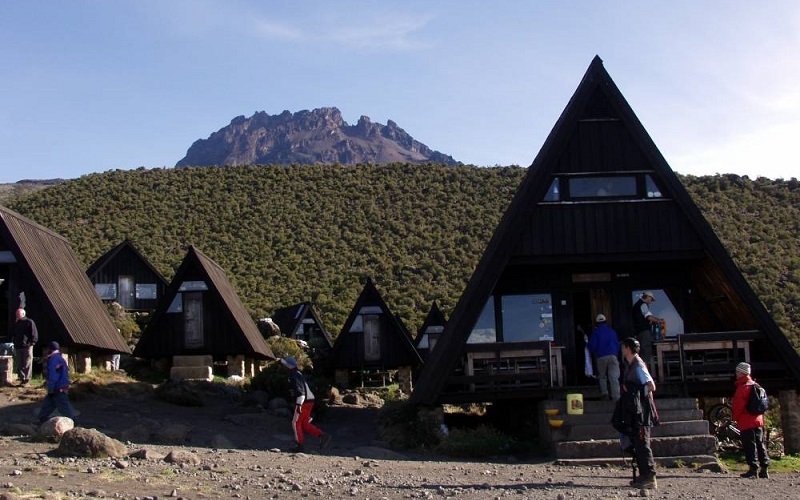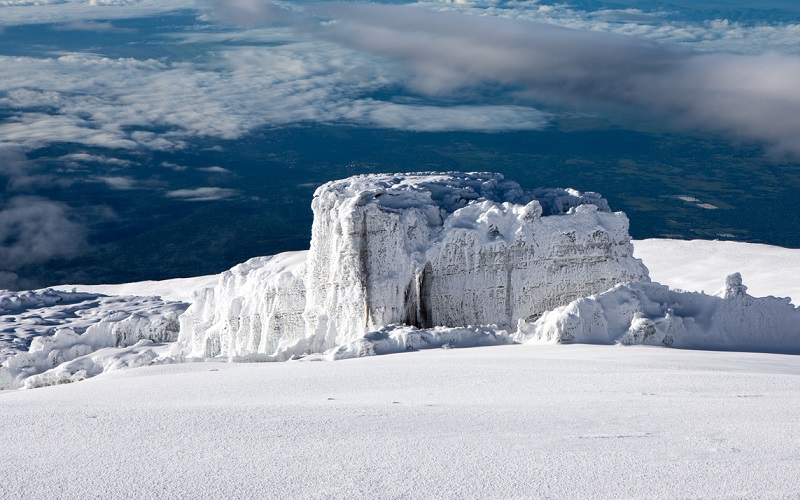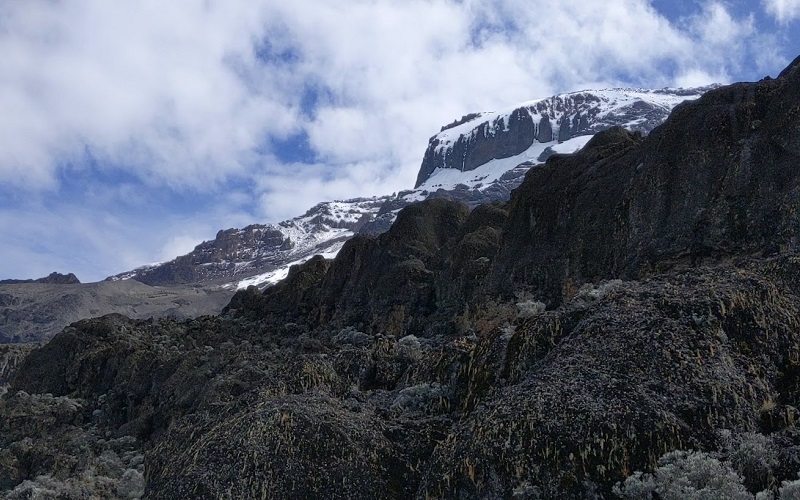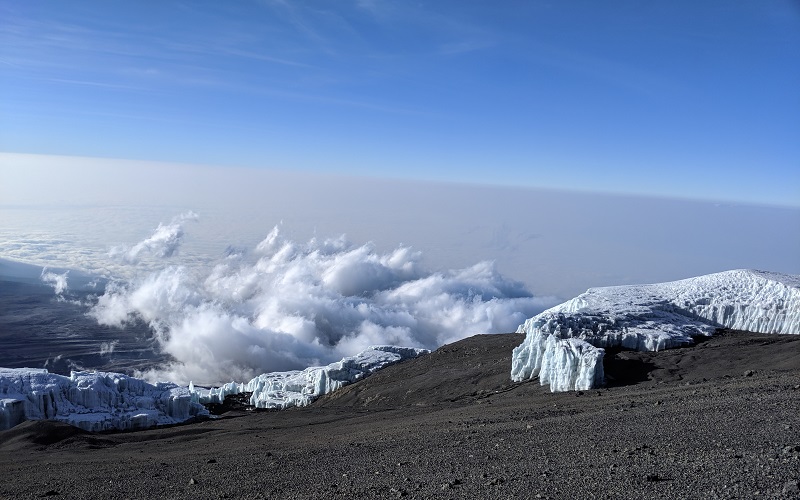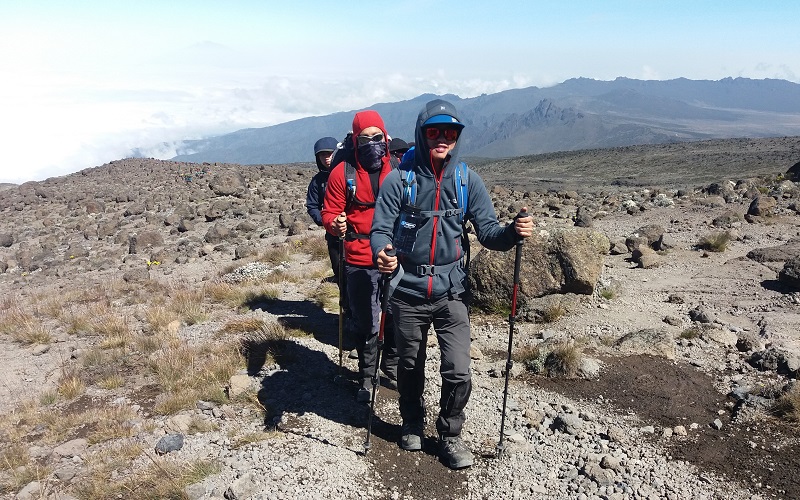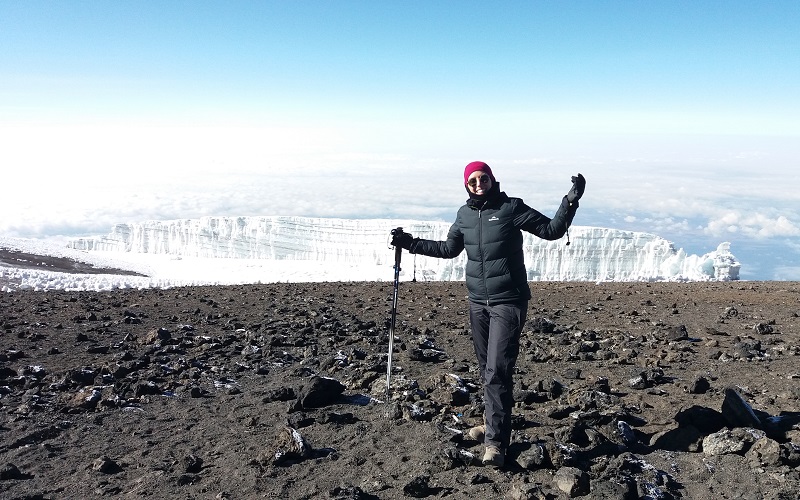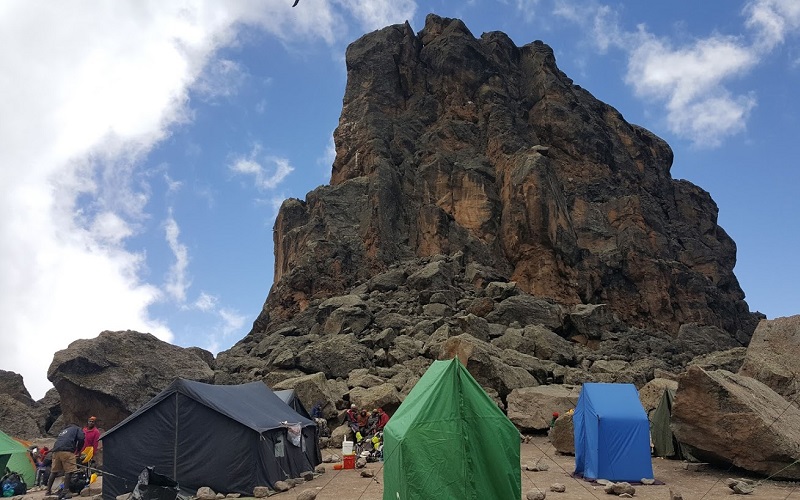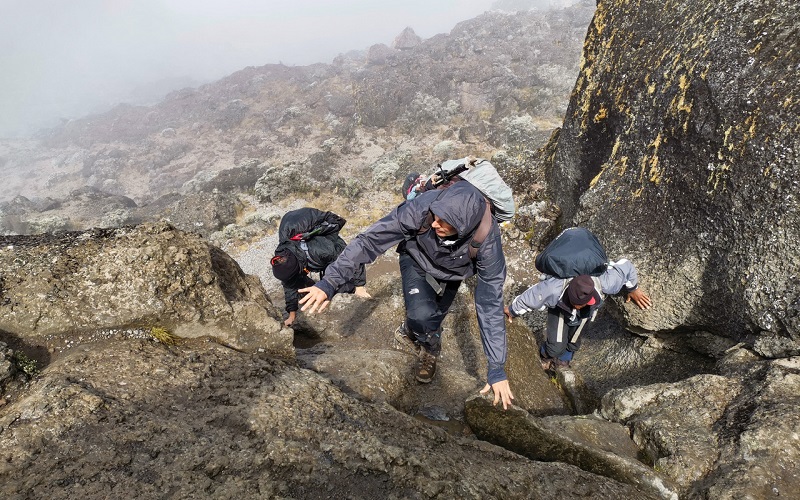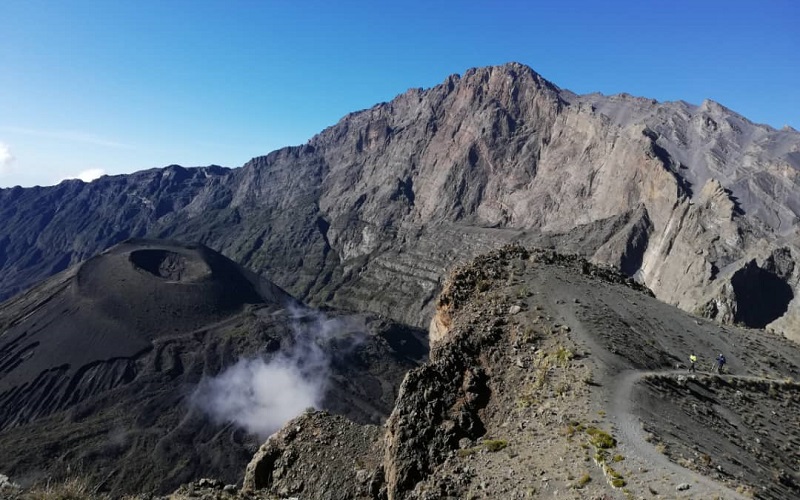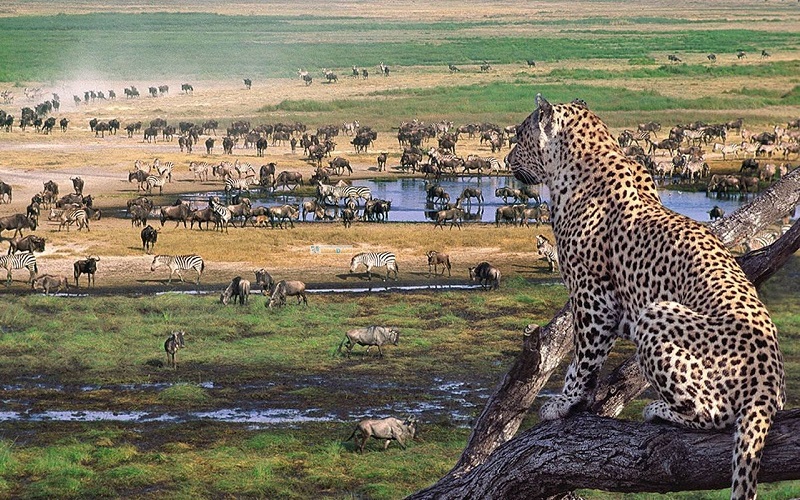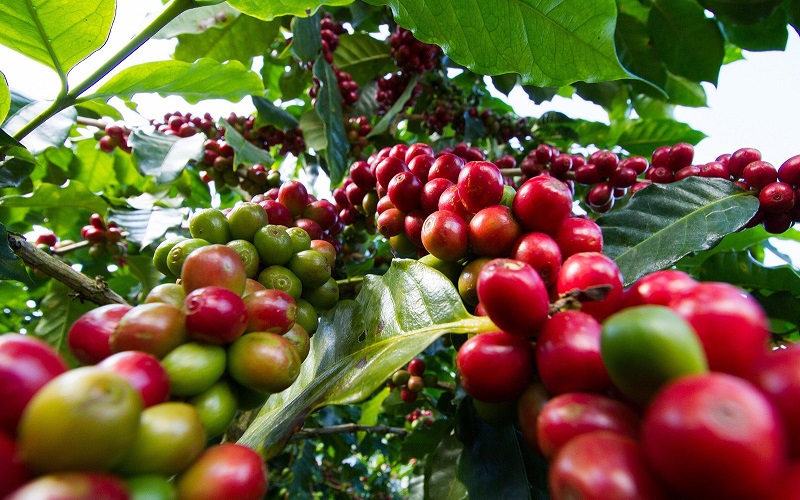TIPS TO SUMMIT MOUNT KILIMANJARO
Climbing Kilimanjaro isn’t hard. The trails are not steep, but the high altitude is what stops most people from summiting.
Mount Kilimanjaro is suitable for beginners, but you do need to train. If you’re not fit, you won’t make it to the summit.
The following are the mostly successfull tips to reach the summits of Kilimanjaro Mountain
1. CLIMB DURING THE DRY SEASON
The primary issue is safety, as the risks associated with climbing increase significantly when the weather is foul. The effects of rain, mud, snow, ice and cold can be very strenuous on the body. Correspondingly, your chances of a successful summit also increases significantly with nice weather.
We advise that the best time to climb Kilimanjaro is during the warmest and driest times of year, from December to mid-March and mid-June to the end of October.
However, although these are considered to be the best times to climb the mountain in terms of weather, they are also the busiest months.
2. CHOOSE THE SUITABLE ROUTE
Always we recommend for the beginners and Aged people to choose the route with high summit success rates, these are Lemosho, Machame and Northern Circuit routes. Also We recommend these routes because they are beautiful and varied, and do not require you to descend along the same path. They also enjoy, and of course, we want our climbers to enjoy standing at the summit!
3. DO PHYSICAL PREPARATION
Physically prepared, one’s chances of reaching the summit is substantially increased. Stamina and mental determination to a great extent, will determine whether or not you will be successful in you quest to conquer Mount Kilimanjaro(the Roof of Africa). Being physically prepared for the trek will also greatly contribute to the level of your perseverance, confidence and personal enjoyment!
How fit do you have to be to Climb Kilimanjaro?
Specific physical conditioning is really important. We have experience of high altitude mountaineering, we can tell you that carrying a weighted backpack, building up the weight you carry, should be at the core of our training. We recommend building up to carrying double the weight you will carry on the mountain. Along with building up to maintaining an endurance based heart rate for 1 hour and 30 minutes in your daily trainingYou should be aiming to build up hiking from 3 to 8 hours once a week. Hiking up and down hills is important, as this will be what you are doing on Kilimanjaro. You should be building from 500m/ 1,640 feet of elevation in a hike to 1,000m/ 3,280 feet in your weekend hike. Building slowly over months is important.
If you do not have access to hills, then you need to be using a stair master machine in the gym or stairs wherever you can find them.
4. TAKE IT SLOWLY, SLOWLY (POLE POLE)
Altitude sickness on Kilimanjaro is the main factor that stops most people from making it to the summit and could be your undoing if you climb too quickly as there is a lack of oxygen at higher altitudes.
During your climbing, you’ll often hear your guides saying “pole pole.” It’s Swahili for “slowly, slowly.” The reason? The slower your ascent, the more time your body will have to acclimatize to the high altitude as oxygen levels begin to drop. If you go up too fast, you risk getting sick and being forced to descend to save your life.
So take it “pole pole.” Enjoy the scenery, don’t rush, and before you know it, you’ll be standing on top of Africa’s highest peak!
5. HIKE, EAT, SLEEP, RECOVER.
Many people find that they are less hungry at high altitude. However, it’s important to remember that you are burning a lot of calories while trekking Kilimanjaro, and your body needs replenishment to give you the best success of summiting. Do your best to eat your meals each morning, afternoon, and night (they will be delicious and plentiful!), but also prepare by packing plenty of snacks. You’ll want these extra snacks between meals as you trek, as well as to supplement your meals if you’re finding you’re having trouble eating the food.
It’s always a good idea to pack in a few extra treats in there as well. You may not always be in the mood for a healthy meal or a protein bar, but if you can never say no to peanut m&m’s or Cheez-its then bring some! This will ensure there is something in your pack that you will eat even when nothing else sounds good—and is a yummy summit treat otherwise!
On the mountain, you will quickly find yourself in a routine. You wake up, eat breakfast, hike. You eat lunch, hike. You eat dinner, sleep.
Getting adequate sleep is important on the mountain, but easier said than done. As the body is adjusting to the altitude while at the same time overcoming jet lag, you may find yourself waking up frequently throughout the night or not being able to sleep altogether. This is pretty common on the first few nights. It is a positive sign if your sleep quality improves as time passes. It means that you are recovering better from the daily activities and that you are acclimatizing too.
6. POSITIVE MENTAL ATTITUDE
Your attitude will also have a huge effect on whether or not you reach the summit of Kilimanjaro. Increase the odds of your success (and the success of those around you) by having a positive attitude. Remember why you chose to do the hike (and remember it was a choice that you made; you’re not being forced to complete it), and revel in knowing that you are achieving something incredible.
7. CHOOSE PROFESSIONAL COMPANY
Good Kilimanjaro trekking companies use guides that know how to improve your chances of reaching the summit safely and have proof to back this up.
While it’s tempting to go with the lowest price, you’re gambling with your safety. Cheap or unknown tour companies are often unreliable and don’t use the high-quality gear.
If your guide is “green” and doesn’t know how to detect or treat altitude sickness, you could find yourself in a serious medical situation.
8. LISTEN TO YOUR BODY
There are some important tell-tale signs when it comes to altitude sickness, and if you ignore them – well let’s just not go there. We want you to be safe, and to do that, you need to listen to and respect your body. Don’t try to push yourself further than you know you can go.
9. PACK YOUR CLIMBING EQUIPMENT AND LAYERS FOR THE DIFFERENT CLIMATE ZONES
Climbing Mount Kilimanjaro is nothing to scoff at. It is a 19,000-foot mountain, after all. If you want to climb Kilimanjaro successfully, you need to invest in high-quality gear.
Seriously, don’t skimp on it.
You need clothes, hiking boots or comfortable walking shoes, and other hiking necessities that are made for trekking and can handle the freezing temperatures of Kili when you enter the alpine zone.
Going with the cheapest option at the store isn’t going to keep you warm or make the trek enjoyable.
Not sure what to pack? Check out our Kilimanjaro packing lists.
When packing, opt for layers. It’s one of the best tips for climbing Mt Kilimanjaro that’ll make your life 10x easier and help you quickly adapt to the different climate zones on the mountain
